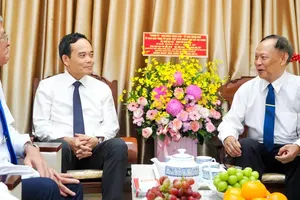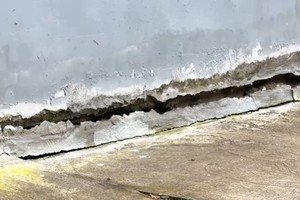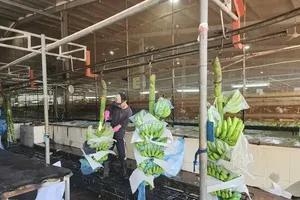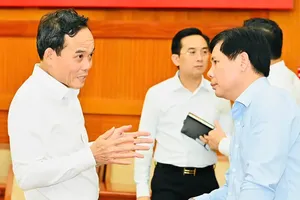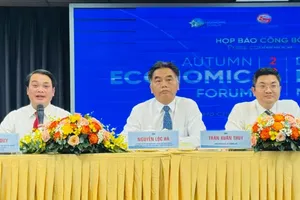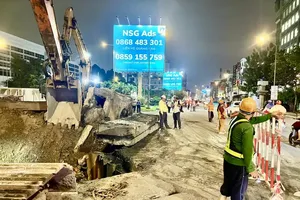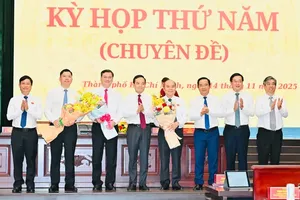
Ninety-five years ago, on November 18, 1930, under the Party’s leadership, the Anti-Imperialist Alliance Association was established. This marked the birth of the first United National Front organization for the Vietnamese working class and other laborers.
Through various historical periods of the revolution, the Vietnam Fatherland Front has adopted different organizational forms and names to meet specific demands and tasks. Yet, it has always fulfilled its glorious historical mission, contributing significantly to the struggle for national defense and the great revolutionary cause of the Party and the people.
In the South, December 1960 saw the birth of the National Liberation Front of South Vietnam. Shortly after that, on March 19, 1961, the National Liberation Front Committee for the Saigon - Gia Dinh area was established in Cu Chi District. Chaired by architect Huynh Tan Phat, it successfully rallied a vast number of patriotic notables, intellectuals, and businesspeople.
From there, these movements coalesced into a massive force, contributing to the goal of liberating the South and reunifying the country. Following the Liberation of the South and National Reunification, the Vietnam Fatherland Front – HCMC Branch played a crucial role in gathering and calling upon all walks of life to focus their utmost efforts and unity on building and reconstructing the city.
Upholding the glorious tradition of the United National Front, later the Vietnam Fatherland Front, the HCMC branch has excelled in fostering social consensus across all societal strata. It initiated impactful campaigns like “Gratitude”, “For the Poor”, and “For the Homeland’s Seas and Islands – For the Fatherland’s Frontline” that resonate nationwide.
Channeling the spirit of “HCMC for the whole country,” the HCMC Fatherland Front mobilized residents to support compatriots recovering from natural disasters. These movements have permeated daily life, serving as a vital spiritual foundation and a driving force for the city’s development.
In the 2015-2025 period, the “For the Poor” movement reportedly mobilized over VND1.9 trillion (US$76.4 million). This funding supported the construction and repair of 10,429 charity homes, awarded 193,665 scholarships, provided livelihood support for 3,522 households, and furnished 338,381 health insurance cards. These efforts contributed significantly to pulling the city’s poverty rate down from 1.49 percent to just 0.33 percent, surpassing the target ahead of schedule.
In 2025 alone, the HCMC Fatherland Front promptly mobilized and received over VND224.9 billion ($8.5 million), along with tens of tons of goods valued at over VND7 billion ($265,500). It organized delegations to visit, encourage, and support people in the Northern and Central provinces recovering from storm and flood damage.
People-to-people diplomacy has also been implemented effectively through exchange activities and support for neighboring Laos and Cambodia, with the “Vietnamese Families with Laotian and Cambodian Students” project being a standout initiative.
Innovating under Party leadership, the HCMC Fatherland Front prioritizes the grassroots and streamlines its apparatus for efficiency. After four months operating under the new two-tier local government model, activities have stabilized. Consequently, the bloc of great national unity has been increasingly strengthened and firmly consolidated.
In this new phase, the Vietnam Fatherland Front and the city’s socio-political organizations at all levels will continue to hold the role of a “political core” in gathering and building the great national unity bloc. Together with the government, they will care for the material and spiritual lives of the people, strengthening mobilization efforts to rally the public to join forces in implementing the Party’s guidelines and the State’s policies and laws.
The approach places the people at the center as the subject, the goal, and the driving force of reforming. It aims to promote emulation in learning and creative labor, unleashing all potential and resources among the people to create momentum for the city’s rapid and sustainable development, thereby contributing to the construction and development of both the city and the country.
It is essential to implement policies on ethnic and religious unity effectively, upholding the people’s right to freedom of belief and religion. This involves mobilizing religious compatriots to live a life that is “loyal to the country, good for the religion,” walking alongside the nation and participating in patriotic emulation movements and campaigns.
It’s essential to construct a robust Vietnam Fatherland Front operating substantively based on empirical data, strongly oriented toward the grassroots. Upholding the motto “When the people need, the Front is there,” it strives for “One Big Result every Quarter” and “Two Breakthroughs per Year”.
Continuing its 95-year legacy, the Vietnam Fatherland Front – HCMC Branch excels as the vital conduit between the Party, State, and populace. As the government’s firm political bedrock, it consolidates the great national unity bloc. Pioneering in this new era, it leverages shared strength to drive HCMC’s sustainable development and ensure the people’s happiness.
